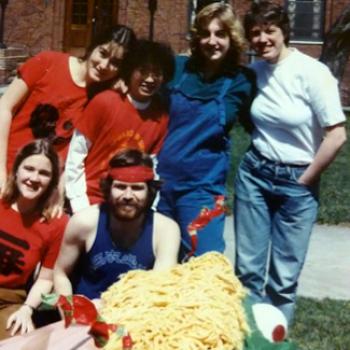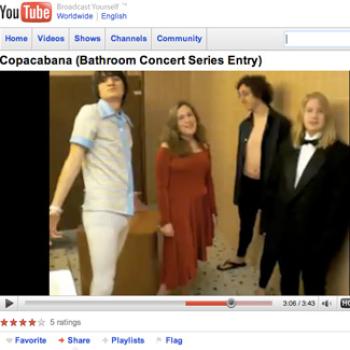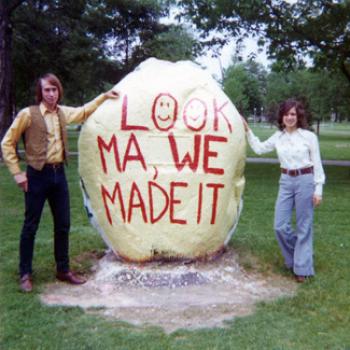On getting to Oberlin and returning
Jim Sunshine ’46
“Once here, I never looked back. I went off to war, came back after three years, graduated in 1949, married a classmate in Fairchild Chapel, took up that career in journalism, and returned 56 years later to live at Kendal on the edge of the campus.”

I came to Oberlin in 1942, when it was much smaller, more obviously devout in a Protestant way, and much less sophisticated, academically and socially. Returning to live here 67 years later I have found it larger, less Protestant, considerably more sophisticated, but essentially unchanged in all the important ways.
In 1942, we lived mostly in made-over houses strictly separated by gender, ate skimpy meals in dining rooms presided over by housemothers who presumed to teach us manners, played bridge after lunch, and danced to records in the bottom of the building known as the Men’s Building and now called Wilder. We had no idea we were deprived.
I knew nothing of colleges at the time, and my parents knew even less. Also, we had no money. My record in a suburban Cleveland high school was fair, nothing more. Bill Seaman, a much-loved admissions director who interviewed me, merely nodded when I said I wanted to go to Oberlin for two years and then transfer to a journalism school at Northwestern. “We’ll see,” he said, and admitted me. I suspect the college in wartime needed male freshmen.
Bill Seaman was right. Once here, I never looked back. I went off to war, came back after three years, graduated in 1949, married a classmate in Fairchild Chapel, took up that career in journalism, and returned 56 years later to live at Kendal on the edge of the campus. That first semester, my money problem was solved by “borrowing” $900 from my aunt, and after the war the GI Bill took care of it for me and millions like me who could never have dreamed of college without it.
Most of those who left with me at the end of that first semester in 1942 returned by 1946. Those who did not are remembered in the little memorial garden beside Finney Chapel. President Wilkins carefully kept a card file on every Oberlin man in service around the world, and at Christmas and on our birthdays there would be a card from him at mailcall on some dismal battlefield. No doubt that is why so many returned when they could have gone elsewhere.
I am convinced there is more to it than that. There has always been a moral as well as an intellectual dimension to Oberlin, from Finney’s “God’s College’ down to the present, from the graham diet, perfectionism and anti-slavery of the 19th century, to vociferous student protests at the slightest hint of injustice anywhere in the world in the 20th. That much was clear to me in 1942, although in those days I was not at all sure what it meant, and it is clear to me today in the serious, earnest and purposeful approach of most students to their studies, their politics, and their social concerns, and in the ways in which they treat each other.
I served on the memorial committee that planned the World War II memorial garden in 1995, and one of my jobs was to write an article for the Alumni Magazine about those whose names are on the memorial’s bronze tablets. I read President Wilkins’ file and corresponded with some of their living classmates, and I was struck by their absolute love for Oberlin, what it had meant in their lives and in the lives of those who did not make it back. I still recall a phrase in a 1970’s letter to the Alumni Magazine by a woman of middle age, who wrote “Oberlin to us is still a holy place.”
That may be a bit over the top, but I understood very well what she meant.
Tags:
You may also like

On the Asia House dragon
“It would have been tedious work except that it was ambitious, self-directed, and had nothing to do with classes or credits. What made it something to look forward to was the enjoyment of working...
Bill Heinrich ’81

On making a video for an Ellen DeGeneres Show contest
“I had only known these people for a couple of months, and I was not only asking them to dance and sing in a public place, but I was also potentially asking them to do it on national television (if...
Amanda Nichols ’12

On the influence of an Oberlin education
“Oberlin was not simply a 4-year stopping point, but has been and continues to be an essential part of my journey. It taught me to be ever vigilant in seeking social justice, curious, caring, open to...
Elizabeth Taylor Quilliam ’74